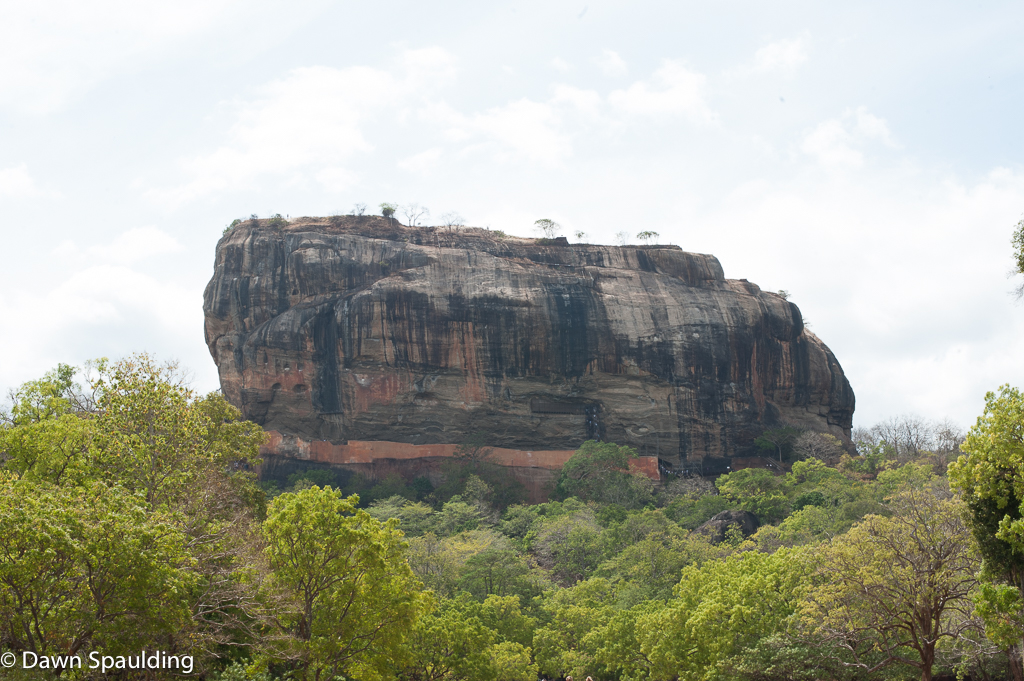
It’s unsurprising that Sigiriya is UNESCO’s 8th Wonder of the World. It’s a stunning sight – a hardened plug of an eroded volcano rising 200 meters from an unremarkable landscape.
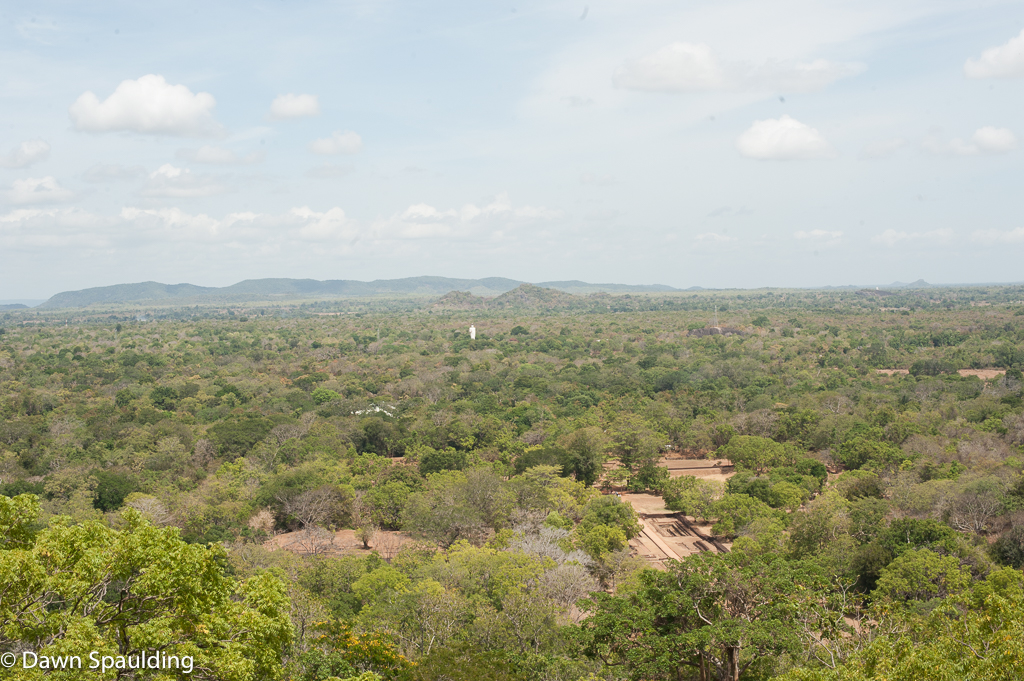
Natural cave shelters and rock overhangs hint it was likely inhabited in prehistoric times. It was probably a Buddhist monastery until King Kasyapa built his palace on top, reverted back to a monastery after Kasyapa’s death. It was abandoned for good in the 14th century.
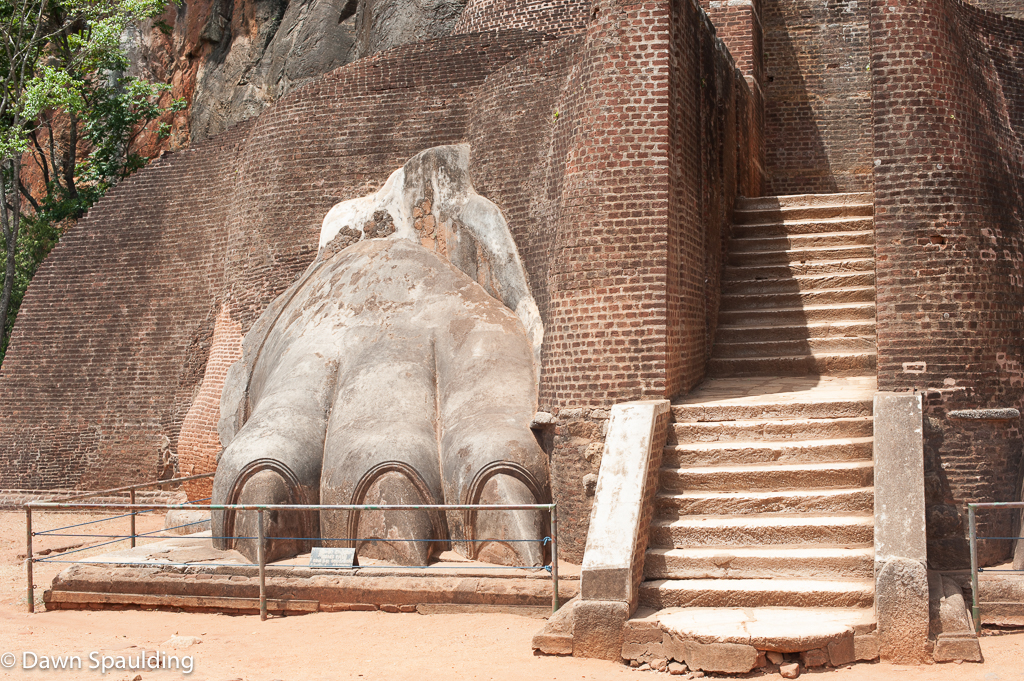
The only way up is along narrow staircases. We started climbing and were eventually spit out onto a platform with Lion’s Paw. Visitors pass between a brick lion’s paws and into its mouth.
Once inside, visitors (including us) climb 1,200 steps to the top.
Lions were the most important Sinhalese royalty emblem and this lion’s enormous size reflected Kassapa’s prestige. Lions also remind climbers that Buddha was Sakya-Simha (Lion of the Sakya Clan) and his truths were as powerful as a lion’s roar.
The bad part about the climb is thousands of hornets swarm the platform. Their nests are in the rock overhang above. Climbers are offered raincoats to protect themselves. Given that it was an extremely hot and humid day, we declined and took our chances. I’m happy to report we were not stung.
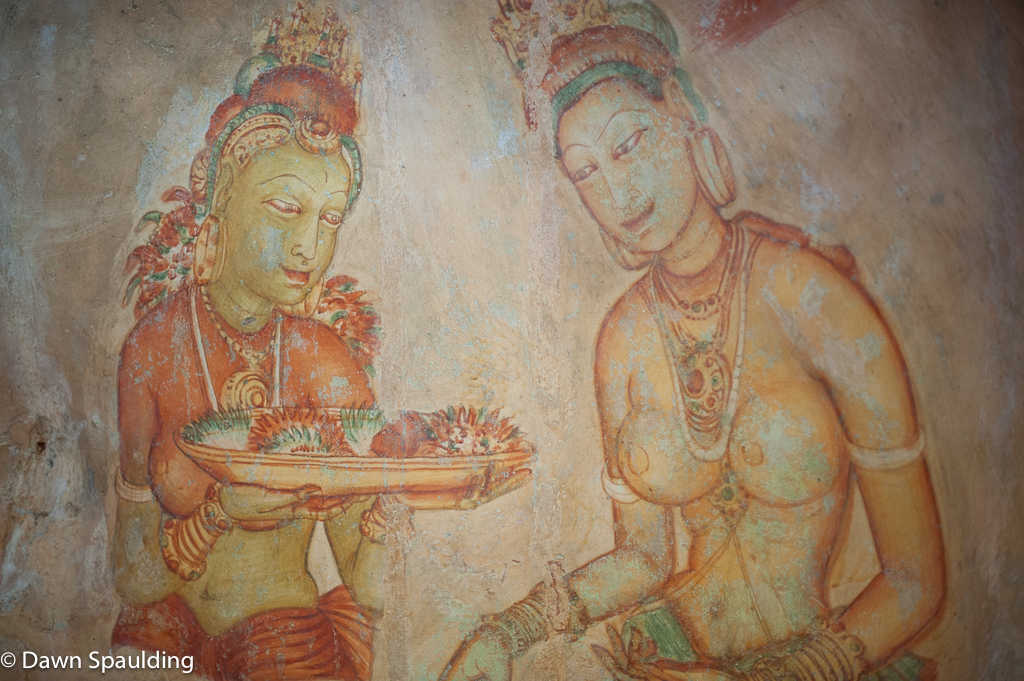
Halfway up are the first frescoes, Sigiriya Damsels, from the 5th century. This series of well-endowed women represent either celestial nymphs or the king’s concubines. Female forms represent aspects of Tara, a bodhisattva and an important figure in Tantric Buddhism.
21 damsels of over 500 survive.
So, what are we all climbing toward?
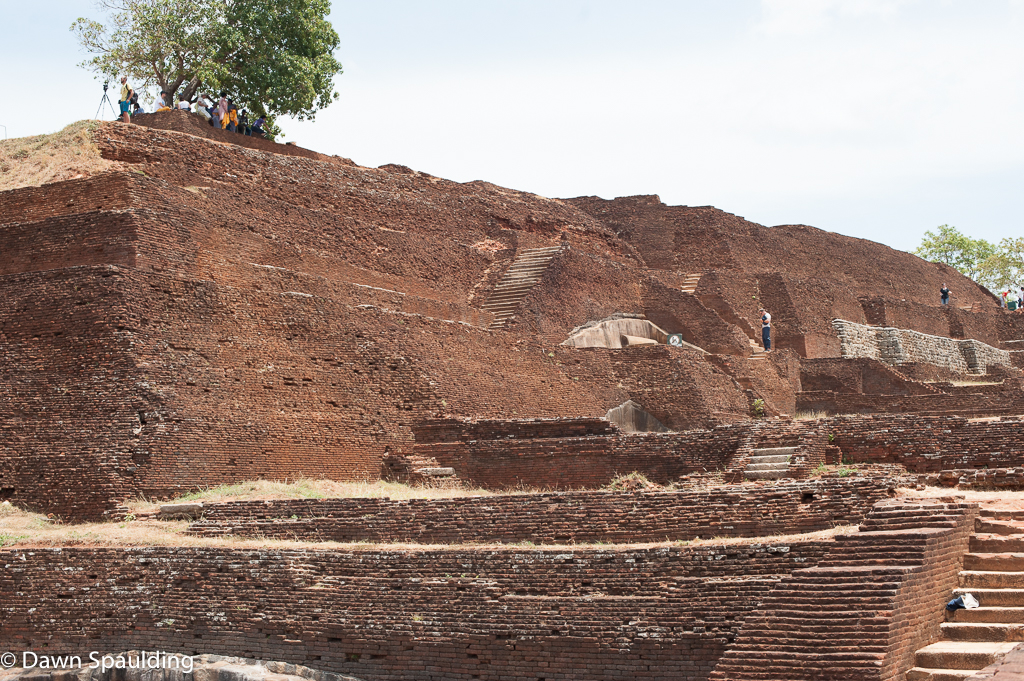
King Kasyapa (477-495 AD), built his palace on the summit. He chose this spot as his royal residence since he was worried of potential attacks from his brother Moggallana, the rightful heir to the throne. As Kasyapa was born to a non-royal concubine, he had no rights. He rebelled against his father, King Dhatusena, imprisoning him and eventually having him killed, entombing him in a wall.
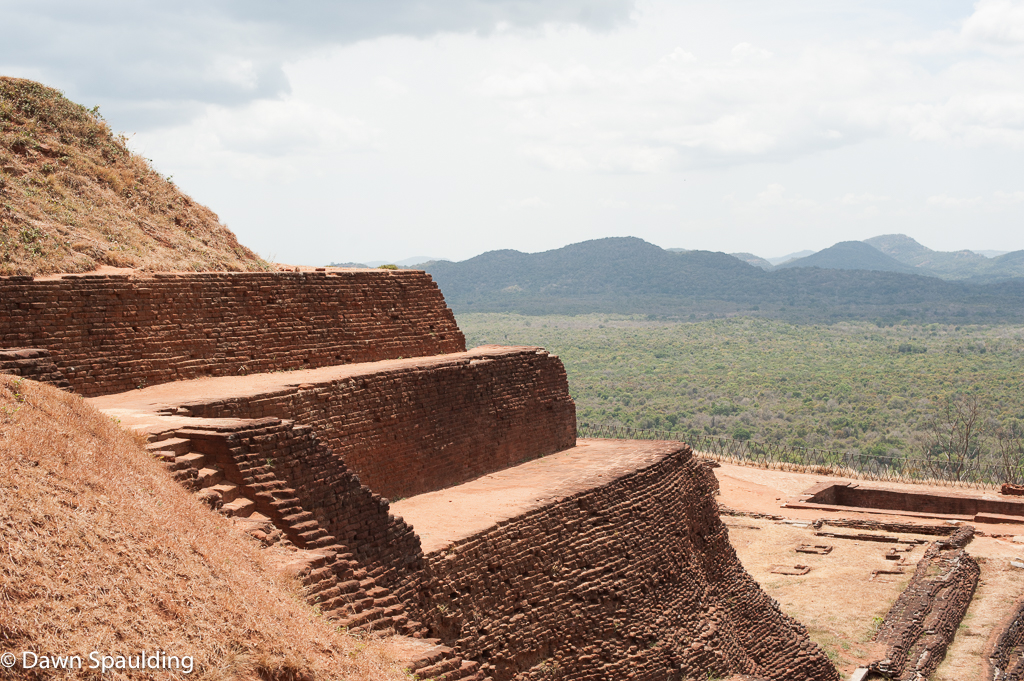
On top, four terraces, probably gardens, fall down the lower edge.
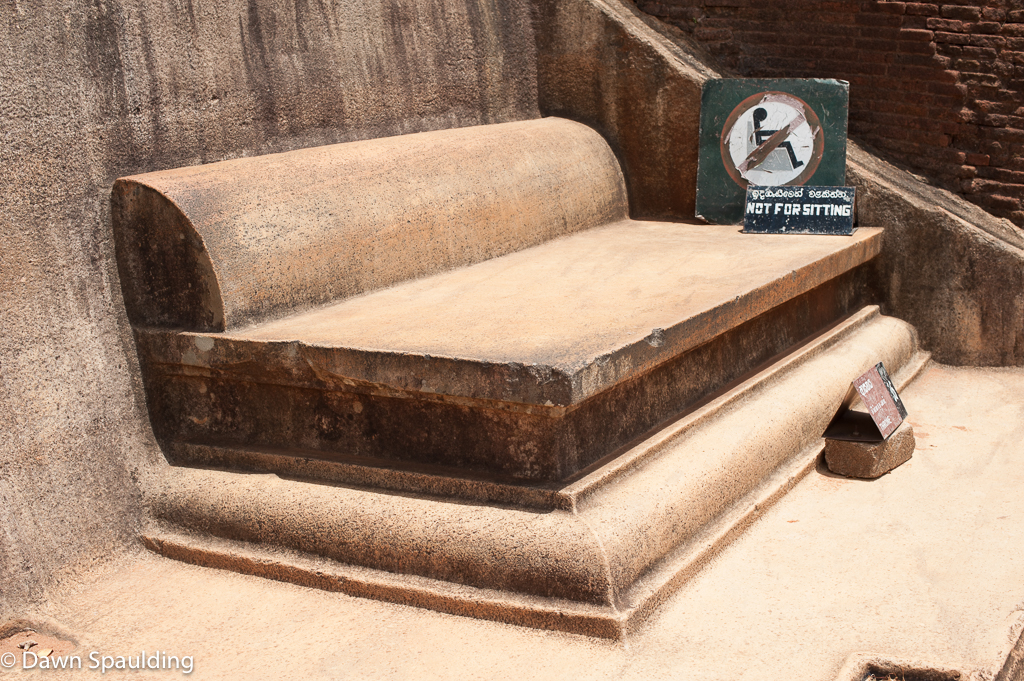
The King’s Throne, a smooth stone slab, could have been a meditation spot.
When his brother appeared from India with an army of Tamil mercenaries, Kassapa rode out on an elephant to confront him. The elephant got scared and bolted from battle. The king’s troops followed. After this mishap, Kassapa killed himself in shame.

No comments yet.